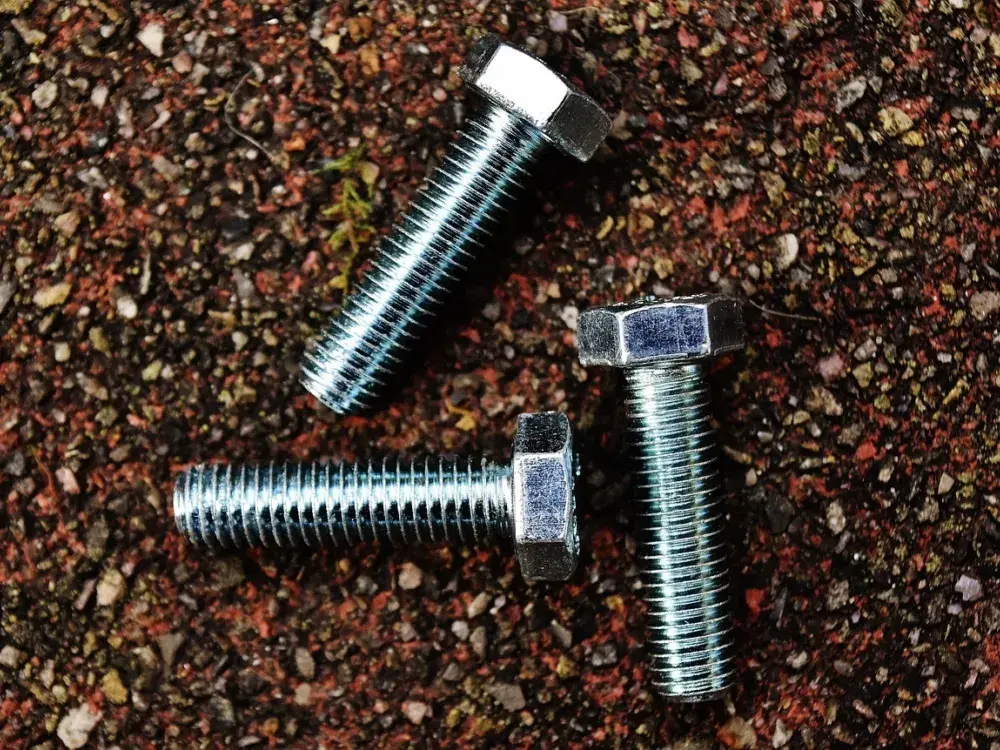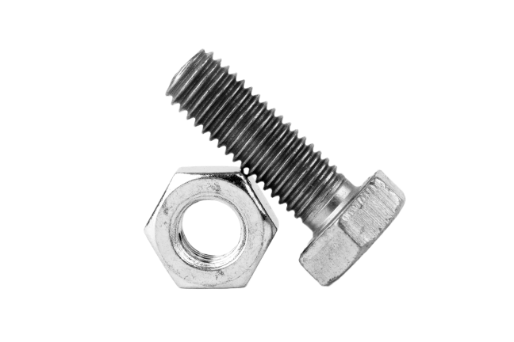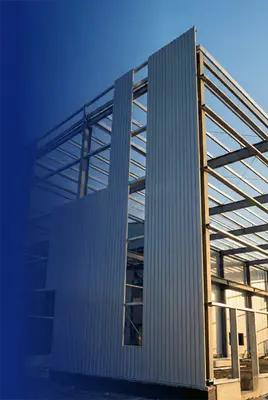
Choosing the right bolt for your application can be complex. Factors like environmental conditions, load-bearing capacity, and cost are important. This article compares galvanized and stainless steel bolts, and discusses their properties, practical considerations, application tips, and environmental impact.
Ever wondered why some bolts withstand harsh marine environments while others are perfect for your backyard project? Let's dive into the world of galvanized and stainless steel bolts to find out.
Understanding the Basics
What is Stainless Steel?
Stainless steel is made up of iron and at least 10% chromium, which gives it excellent resistance to rust and corrosion. It comes in different grades:
- 18-8: Contains 18% chromium and 8% nickel, which is suitable for general purposes and food processing.
- 316: A mix of 16-18% chromium, 10-14% nickel, and 2-3% molybdenum, which is ideal for marine, chemical, and food processing industries.
- 410: Made of 11.5-13.5% chromium, it's used in high-stress applications and heat treatment.
What is Galvanized Steel?
Galvanized steel is steel that is coated in a protective layer of zinc. The galvanization process helps protect the steel from rust and makes it suitable for a variety of applications, especially in environments where corrosion resistance is crucial.
Comparative Analysis of Galvanized vs. Stainless Steel Bolts
When choosing the right bolts for your project, understanding how galvanized and stainless steel differ in key areas is crucial. Here's a side-by-side comparison:
Corrosion Resistance
Stainless Steel: Known for its superior corrosion resistance, stainless steel is particularly effective in environments with moisture and corrosive elements. This is due to its chromium content, which forms a protective layer against rust.
Galvanized Steel: Offers good corrosion resistance through its zinc coating. However, this protection can be compromised in wet conditions that expose the steel to rust.
Strength and Durability
Stainless Steel: Boasts higher tensile strength and load-bearing capacity that make it suitable for demanding applications. This strength comes from its unique alloy composition, including iron and chromium.
Galvanized Steel: Also strong and durable, but generally has a lower tensile strength compared to stainless steel. The galvanization process enhances the strength of the base steel, but it may not be enough for high-stress applications.
Aesthetic and Practical Considerations
Stainless Steel: Offers a polished and refined appearance that makes it a preferred choice for visible applications where aesthetics are important, such as in architectural or decorative uses.
Galvanized Steel: Has a more utilitarian look. It's often selected for its functional qualities in applications where the appearance is secondary, like in certain industrial or outdoor settings.
Each type of bolt has its unique advantages and is suitable for different applications. The choice between them should be based on the specific requirements of your project, including environmental exposure, strength needs, and visual preferences.
Comprehensive Considerations for Bolt Selection
After understanding the basic properties and direct comparison of galvanized and stainless steel bolts, it’s important to contextualize these features within your project's specific needs. Here are the key factors integrated into the decision-making process:
Project Requirements and Environmental Conditions
For projects in moist or corrosive environments, stainless steel's corrosion resistance makes it the superior choice.
In drier settings where corrosion is less of a concern, galvanized steel can be an effective and economical option.
Budget and Cost-Effectiveness
While galvanized steel bolts are often more affordable upfront, consider the potential long-term maintenance and replacement costs, especially in corrosive environments.
Stainless steel bolts, though initially more expensive, can provide long-term cost savings due to their durability and lesser need for replacement.
Load-Bearing Capacity and Application
Stainless steel’s higher tensile strength makes it ideal for high-load applications and situations demanding robust performance.
Galvanized steel, while also strong, is better suited for applications where extreme strength isn’t a critical factor.
Installation and Usage Tips
Compatibility and Galvanic Corrosion
Be mindful of mixing different metals. Combining galvanized and stainless steel can lead to galvanic corrosion, so it's crucial to use compatible materials in your project.
Best Practices for Installation
Always adhere to manufacturer guidelines for both types of bolts to ensure optimal performance and longevity. Proper installation is key to the effectiveness of the fasteners.
Ductility and Weldability Considerations
In addition to the previously discussed factors, ductility and weldability are important considerations when choosing between galvanized and stainless steel bolts.
Galvanized steel typically offers greater malleability, which makes it easier to shape and work with compared to stainless steel. This can be an important factor in projects that require an intricate or precise shaping of materials.
Regarding weldability, both materials are weldable but come with unique considerations.
Welding stainless steel requires careful temperature control to avoid degrading its corrosion-resistant layer, which can impact the material's integrity.
On the other hand, welding galvanized steel necessitates adequate ventilation due to the fumes produced, and the protective zinc layer can be compromised at the weld, and potentially require reapplication.
Understanding these aspects helps to ensure that the right selection is made based on the specific requirements of fabrication and application in your project.
Environmental and Sustainability Considerations
The environmental impact of construction materials is a major concern for both galvanized and stainless steel bolts. It is crucial to consider their unique environmental footprints.
Galvanized Steel Bolts
Zinc Runoff
Galvanized bolts can release zinc into the environment, particularly in outdoor settings. Zinc runoff can have ecological impacts, such as affecting soil and water quality, which in turn can influence plant growth and aquatic life.
Manufacturing Process
The production process of galvanizing steel involves energy-intensive activities and the use of chemicals, which contribute to its environmental impact.
Stainless Steel Bolts
Recyclability
Stainless steel is highly recyclable, which enhances its sustainability. The ability to reclaim and reuse this material reduces the need for new raw materials and minimizes environmental impact.
Longevity
The durability of stainless steel means less frequent replacement, to help reduce waste and the need for additional manufacturing over time.
Making an Environmentally Conscious Choice
When selecting bolts for a project, consider the long-term environmental implications of your choice.
Stainless steel, with its recyclability and longevity, often presents a more sustainable option, especially in projects where environmental considerations are a priority.
Choose Fastener Systems for All of Your Bolt Needs
In choosing between galvanized and stainless steel bolts, consider the specific needs of your project. For quality, reliability, and expert advice, turn to Fastener Systems Inc. (FSI). We offer a wide selection of both types to ensure you find the perfect match for any application. Trust us for your fastening solutions and ensure the success of your project with the right bolts.
Contact us today for a fast quote on your next project!

